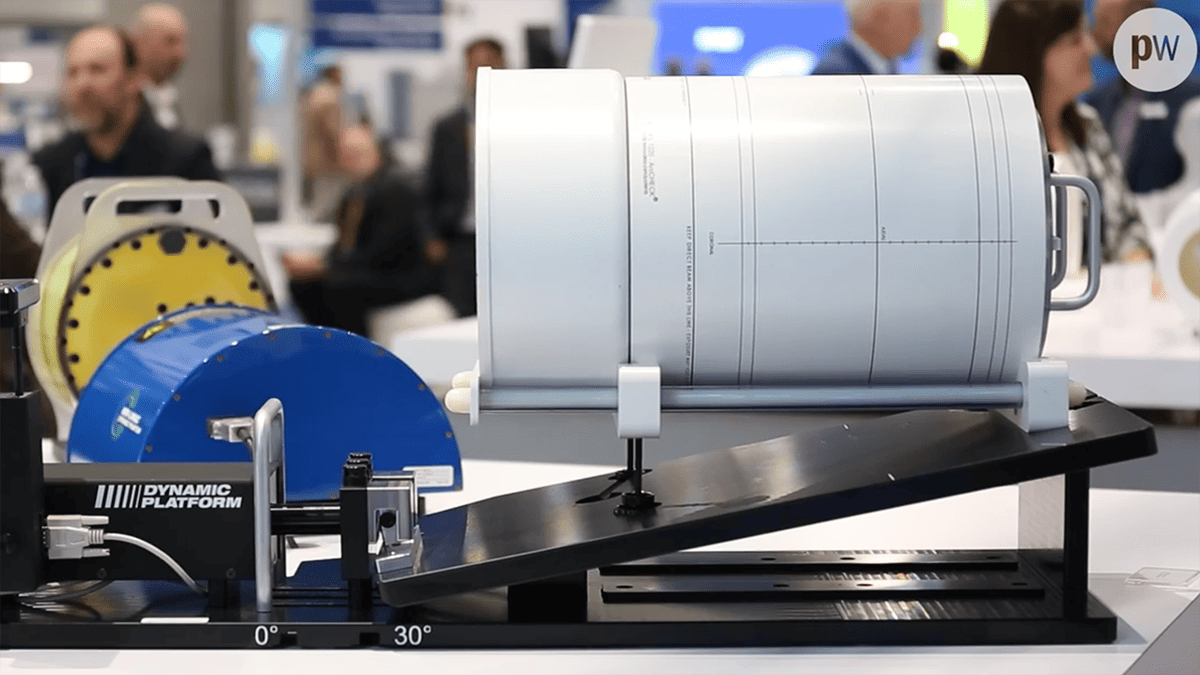
Sun Nuclear presents the latest developments in the SunCHECK, SunScan and ArcCHECK platforms
In this short video filmed at the ASTRO 2023 conference in San Diego, US, Greg Robinson, patient QA product line director at Sun Nuclear, outlines recent developments with the SunCHECK platform.
Robinson points out that many new technologies and increasing complexities are being introduced into the workflow, but that there’s currently a big shortage of qualified medical physicists. And this is where technology companies can help. So Sun Nuclear is looking for ways to automate mundane tasks. In terms of in vivo QA, that means looking at things that are related to the patient on a per-treatment level. SunCHECK can bring in log file data and image data to give the clinicians a snapshot of the real treatment on the patient – and perform 2D analysis and 3D dose reconstruction to help improve treatment decisions and reduce the number of patients that have to be re-scanned and re-planned.
Next, Mark Rose, director, product management, explains that there has been a concerted effort at Sun Nuclear to make products relevant for stereotactic radiosurgery (SRS). The SunScan 3D has been designed with 0.1 mm positioning accuracy to handle SRS-type fields. A virtual reference detector leverages pulse normalization as the beam of radiation is coming from the linac. It doesn’t just measure the dose, says Rose, it can measure the number of pulses of radiation that are arriving. So, as long as the amount of dose-per-pulse stays constant, SunScan provides a good projection of what a percentage depth dose (PDD) curve looks like.
The ArcCHECK system, meanwhile, has a MultiPlug that allows insertion of a tumour surrogate. This enables tracking systems to follow it as the ArcCHECK moves on a platform. So, as the tumour moves inside the ArcCHECK and the imaging system tracks its delivery, it’s possible to take the dose that’s acquired by the diodes inside the ArcCHECK and correlate it to that expected from the treatment-planning system. Then it’s possible to compare the radiotherapy dose to that measured, and get a better understanding of how well the tumour tracking has worked.
- SEO Powered Content & PR Distribution. Get Amplified Today.
- PlatoData.Network Vertical Generative Ai. Empower Yourself. Access Here.
- PlatoAiStream. Web3 Intelligence. Knowledge Amplified. Access Here.
- PlatoESG. Carbon, CleanTech, Energy, Environment, Solar, Waste Management. Access Here.
- PlatoHealth. Biotech and Clinical Trials Intelligence. Access Here.
- Source: https://physicsworld.com/a/improved-analytics-and-data-management-for-radiotherapy/
- :has
- :is
- :where
- 1
- 2023
- 2D
- 3d
- a
- accuracy
- acquired
- allows
- amount
- analysis
- analytics
- and
- ARE
- arriving
- AS
- At
- automate
- BE
- Beam
- been
- being
- Better
- Big
- bring
- but
- by
- CAN
- clinicians
- coming
- Companies
- compare
- complexities
- concerted
- constant
- Currently
- curve
- data
- data management
- decisions
- delivery
- depth
- designed
- developments
- Diego
- Director
- Doesn’t
- dose
- effort
- enables
- expected
- Explains
- Fields
- File
- follow
- For
- from
- get
- Give
- good
- handle
- Have
- help
- How
- HTTPS
- image
- Imaging
- improve
- improved
- in
- increasing
- information
- inside
- into
- introduced
- issue
- IT
- ITS
- just
- latest
- latest developments
- Level
- leverages
- like
- Line
- log
- Long
- looking
- LOOKS
- make
- management
- many
- means
- Meanwhile
- measure
- medical
- moves
- New
- New technologies
- nuclear
- number
- of
- on
- out
- outlines
- patient
- patients
- pdd
- percentage
- Perform
- Physics
- Physics World
- platform
- plato
- Plato Data Intelligence
- PlatoData
- points
- positioning
- possible
- presents
- Product
- product management
- Products
- Projection
- provides
- pulse
- Q&A
- qualified
- Radiotherapy
- real
- recent
- reduce
- reference
- related
- relevant
- ROSE
- San
- San Diego
- says
- Short
- shortage
- Snapshot
- So
- Sun
- system
- Systems
- Take
- tasks
- Technologies
- Technology
- technology companies
- terms
- that
- The
- then
- There.
- things
- this
- thumbnail
- to
- Tracking
- treatment
- understanding
- us
- Video
- Virtual
- ways
- WELL
- What
- with
- worked
- workflow
- world
- zephyrnet













